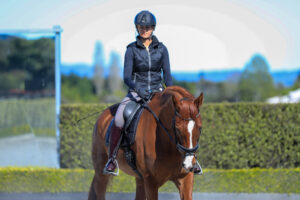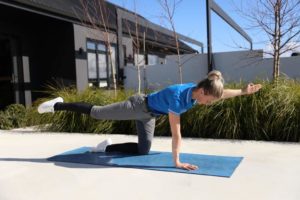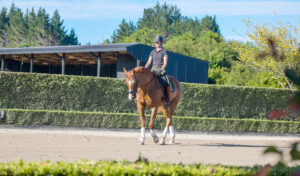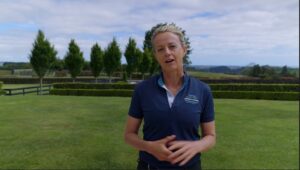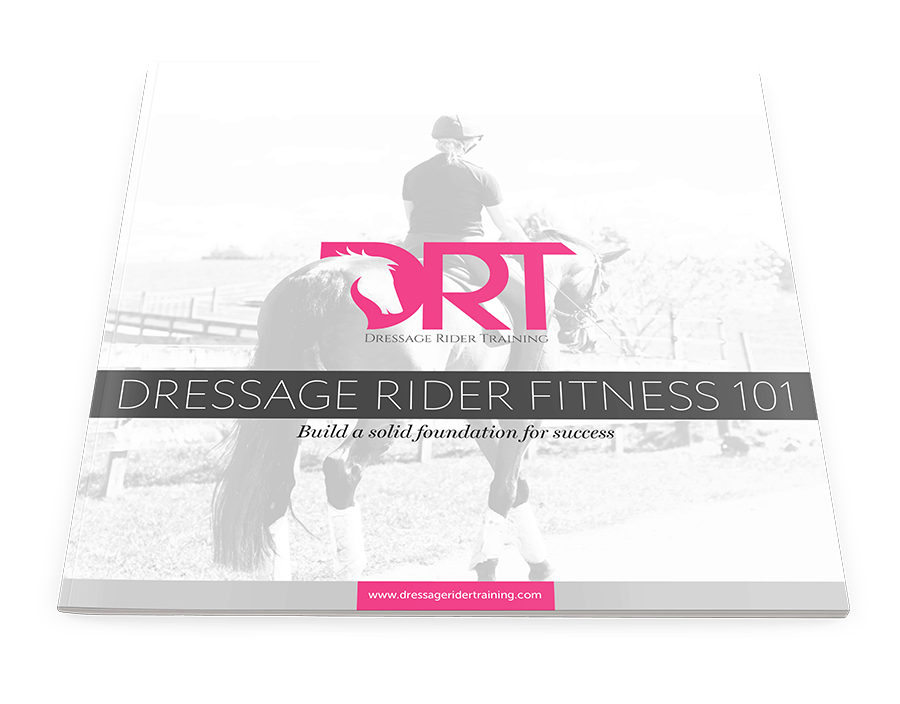13 Ways To Build Stronger Bones And Prevent Injury From Falls
The great thing about dressage and most riding is that we can generally speaking ride in our older years. In fact, the average age of our DRT members is 55, with our eldest being 82 and you don’t have to look far on social media to find the latest video showing someone in their 90s still riding. I certainly hope I am lucky enough to still be riding in my later years!
Improve health of your cartilage
One of the biggest issues however as we age is the health of our cartilage. Strip away the skin, fascia, muscles, organs, blood vessels of a human and you’re left with the bones: the foundation providing passive structural support to your body.
Cartilage is made of water, collagen, and proteoglycans, a protein-polysaccharide bond that provides elasticity. What is commonly thought is that you can’t control the integrity of your bones as you age. It’s just inevitable that they become brittle.
It’s also not often talked about cartilage, as tissues go, it’s fairly isolated. It doesn’t contain blood vessels, so we can’t deliver blood-borne nutrients to heal and grow it. Cartilage has no nerve cells, so we can’t “feel” what’s going on.
The truth is though, bone is incredibly plastic, responding to activity and nutrition. Bones are living metabolic tissue and although you can’t tell them what to do directly like you can with a muscle when strength training, you can help them build their integrity and strength from the signals that you send them, no matter your age.
What signals should we be sending?
1. Lift heavy loads and move quickly
Our bones respond to the intensity that is placed upon them. Lifting heavy weights and placing ‘correct’ load onto your body is one of your osteoblasts’ favourite things. The load sends unmistakable signals that trigger your bones to begin fortifying themselves and adapt to become stronger. Take a look at this harvard study or this one here
Osteoblasts are to bone as chondrocytes are to cartilage. Just like an osteoblast responds to load by increasing bone mineral density, chondrocytes respond to load by increasing cartilage growth and repair. You have to load it or lose it.
No matter the age of your bones, they respond to the same training signals and the best type of training for all ages is a combination of ”impact training” and “resistance exercise”.
So not just placing heavy loads on your body through weights, but also movement that asks your body to move quickly, so think sprinting/interval work, but this doesn’t have to be ‘running’ it could be high knees on the spot or even skipping, jump squats and doing it in short duration to get the right hormonal response on the body.
A study here on the bones of sprinters joints versus endurance athletes proved how the shorter duration high-intensity movement help improve bone density over time.
Now I know what you might be thinking….sprinting! What? This can be achieved in a variety of different ways and the key it to try not to just rely on low-impact exercise and just your riding as exercise if you want to keep your bones healthy, because they don’t exert enough impact to stimulate bone strengthening.
This is one of the reasons the training within our program helps so many of our “mature” riders with the combination of both of these factors and of course options to suit various levels of fitness and ability.
2. Move around a lot.
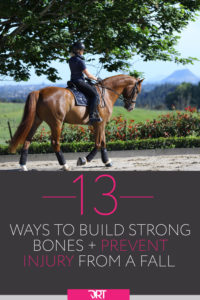
You should develop a daily movement practice that include mobility and suppleness work too. Movements to work on joint mobility, foam rolling, and stretching. Many joint injuries occur because the tissues surrounding them—your muscles, your fascia, your major movers are restricted, so keeping your body moving and paying attention to keeping your muscles, bones and fascia healthy helps prevent injury from placing undue stress on the joint itself.
3. Walk over varied terrain
Luckily with horses we do tend to walk over various terrain, but sometimes we don’t. When we do however and we expose our body landscapes strewn with stones and dips and fallen branches and slippery leaves, inclines and declines and slants, you not only have to think while your move, but so too does your nervous system and proprioception.
Plus walking across varied terrain exposes your cartilage to different positions and different loading patterns. All of which by doing helps prevent injury from a fall by improving the integrity of your cartilage.
4. Go barefoot
Everything starts with how your foot connects with the ground. If you’ve got a big thick slab of rubber blocking the millions of nerves in your feet from sensing the ground, everything up the kinetic chain suffers above it. So try introducing going barefoot more often, even if you just start around your house on the weekends (Of course common sense applies here and always wear shoes around your horse ;)).
5. Get outside into nature.
Luckily a horse waiting at the gate or stable door is a great way to get outside, but sometime during winter our outside time can become limited and spending time in nature actually offers many benefits to your cartilage.
First, you’re more likely to be active, therefore subjecting your joints to the loading and multivariate articulations they require to be healthy.
You’ll also get more sunlight, which has been linked to better cartilage health in older adults.
Plus you will lower cortisol and improve your immune response. Elevated cortisol has been shown to impede cartilage repair, and some types of arthritis are autoimmune in nature.
6. Consume more gelatin and collagen.
Collagen is what makes up a significant portion of the bone matrix. Without collagen present, bone would be overly hard and likely brittle. Collagen provides elasticity to help prevent fractures.
Glycine underpins the growing bone and sourcing it from broth/supplemental collagen is a great way to obtain it. The reason why drinking broth and eating collagen makes so many people feel better is that we are providing a fundamental nutrient: glycine.
Our bodies need about 10 grams of glycine each day to maintain basic metabolic functions. We can only make 3 grams, so 7 grams must come from the diet and a major function of glycine is to maintain and repair cartilage. It’s for this reason I like to add mine to my smoothie daily and there are lots of brands out there now, just be sure to purchase organic and 100% grass-fed. Then during winter I love my homemade bone broths and soups which are all naturally loaded with collagen.
So if your training hard, feeling stiff or trying to recover from existing damage, your glycine needs to increase. A study found that supplementary collagen improves joint pain in athletes who complain about their knees. And more recently, a study found that giving dietary collagen alongside Tylenol to patients with osteoarthritis improved joint pain and function over Tylenol alone.
7. Dairy helps!
Dairy gets a bad rap these days, and many including me are intolerant to lactose.
“However, most serious researchers recommend that older people at risk for osteoporosis consume more dairy, not less. In fact, people who can’t consume dairy because of an allergy have lower bone mineral density. Upon desensitization therapy and resumption of dairy consumption, bone mineral density recovers.” Mark Sisson
For me personally, I can still consume some dairy without the lactose, so hard cheeses and butter are my go-to. For optimal results, eat dairy that in mininally processed and contains additional bone-friendly nutrients, like butter, gouda cheese (with vitamin K2) or yogurt/kefir (which benefits gut health and therefore absorption of more minerals and vitamins) all of which are also great for lactose-intolerant people.
8. Good Quality Sleep
Lack of good quality sleep affects your bone health in a number of ways. Let me explain.
Endogenous growth factors like human growth hormone play major roles in cartilage repair. Growth hormone is largely produced at night, during sleep.
So whether we’re recovering from the microdamage caused by smart training and regular loading or the degenerative damage caused by poor mechanics and outright injuries, sleep is where most of the repair happens.
Sleep duration is inversely associated with osteoporosis. Less sleep leads to greater bone loss. More sleep protects against it. You see, melatonin, the hormone that induces sleepiness at night, also plays a huge role in bone metabolism.
So improving ones circadian cycle and sleep quality is a vital components to keeping your bones healthy. Have a listen to my podcast here all about improving your sleep.
9. Stay Hydrated + Drink Mineral Water
Dehydrated tendons are dry, stiff, and completely unmanageable. Hydrated tendons are slippery, pliable, and still tough as nails. Now consider that cartilage and tendon are made of very similar stuff, without hydration, cartilage doesn’t slide as easily. It can’t do its job.
Once you have cartilage damage, hydration is even more important because damaged cartilage is harder to hydrate. The type of water you drink can affect how well hydrated your body becomes, because in order to penetrate the cells the body needs minerals.
Traditionally all water was mineral water, it came from local springs or bores and contained valuable trace minerals. However this water was also associated with leaving mineral films on dishes and glogging pipes, and got the name ‘hard water’. So today most water is treated and stripped of all minerals.
The calcium and magnesium that is present in mineral water is highly bioavailable, meaning they are very easily absorbed and used by the body. Both minerals are extremely important for bone health and mineral water is an effective, delicious way to obtain more of them.
If you can source mineral water, however if this is just not possible, try my sports drink recipe below by using added himalayan salt to your filtered water.
- 750mls water
- pinch himalayan salt
- Juice from one lemon
10. Load up on these natural nutrients and foods
Melatonin
In order for our body to produce and promote healthy melatonin production, its important to optimize your circadian cycle. So getting plenty of full natural light earlier in the day, avoiding blue light in the evening, and getting good quality deep sleep consistently promotes healthy melatonin production.
Cod liver oil
High in vitamin A and has the correct pre-formed retinol form and enough vitamin D to balance your intake.
Blackstrap molasses
Not just for the horses, but a tablespoon of blackstrap molasses will give you 180 mg of calcium, at least 48 mg of magnesium and about 20% of your daily copper needs.
Vitamin D, vitamin A, and vitamin K2
These three synergistically promote healthy bone metabolism. Both vitamin D and vitamin K2 have been shown to improve osteoporosis.
For vitamin D, get sun exposure or supplement. For vitamin A, eat liver once a week or take cod liver oil blend like this one with K2.
Leafy greens
Greens like kale and spinach contain important minerals (calcium and magnesium) and polyphenols for bone health and inflammation.
Small bony fish
Fish that contain their bones like sardines provide the important pro-bone trio of animal protein, anti-inflammatory omega-3s, and bioavailable calcium.
Not to mention the pro-bone nutrients and vitamins that help increase the healing of broken bones as well as fortify and promote healthy ones.
11. Avoid chronic inflammation
Avoiding processed foods, foods high in omega 6 PUFA, foods you are intolerant too and too much sugar can all lead to inflammation and inhibit the creation of new bone cells.
Studies have shown that reducing inflammation has been shown to restore the lost osteoblast activity. So paying attention to inflammatory in your diet plays a valuable role in taking care of your bone health.
12. Eating high-quality protein
Increasing your protein intake, particularly good quality animal protein. Protein protects and strengthens bones and helps provide the building blocks in preserving and/or building bone health. But don’t just stick to protein, increase your plant based real foods along side this and you have a great long term strategy. Have a look at this study here.
13. Eat lots of plants
Everyone can agree that fruit and vegetable consumption has a positive connection to bone health. Study after study shows that greater intakes of fruit and vegetable (and potassium and magnesium which are markers for produce intake) predict better bone health. So even if you can’t do some of the above suggestions for personal reasons, do eat more plants.
It’s a good idea to focus on phytonutrient-rich produce such as colourful fruits and vegetables. Think purple potatoes, cabbage, and carrots and berries of all kinds, even extra virgin olive oil contains a polyphenol with bone-promoting effects.
Prevent Injury
So there you have a number of ways to help improve your overall health of your cartilage and bones to prevent injury when you fall. It’s important to understand that improving your fitness and overall strength can not only help you with your riding, but also prevent injuries when you fall too.
A study here of polo players in the UK, recorded “rider fitness was associated with positive and negative risks; perception of self fitness was associated with an increased risk of injury, whereas actual fitness, as measured by gym exercise, was associated with a decreased risk.”
So staying healthy, active and strong mentally and physically helps your with those reaction times, coordination and balance in the saddle for when those incidents do happen.
More articles
Dressage Rider Training Program
Join other participants on our 12-week 'step-by-step' online rider
training program. Improve the 5 components of your riding.
Only available 3x per year.
see full details & register your interest

